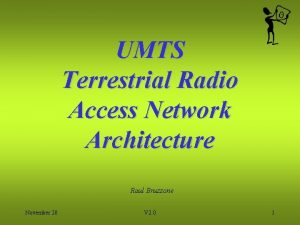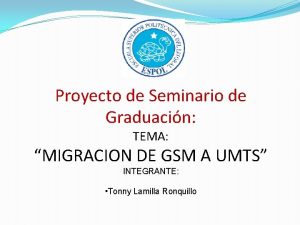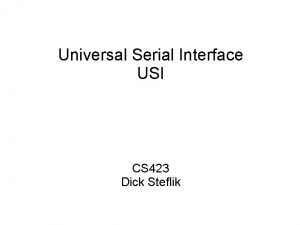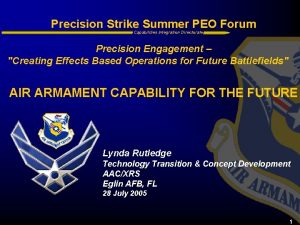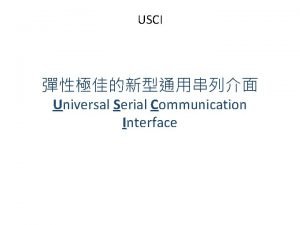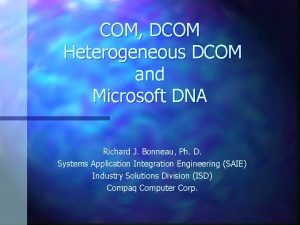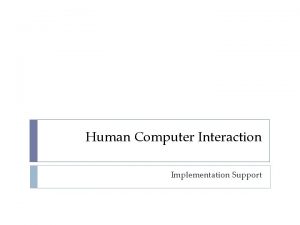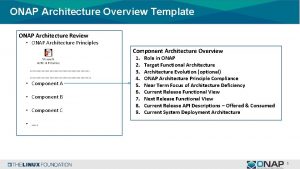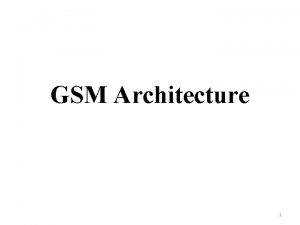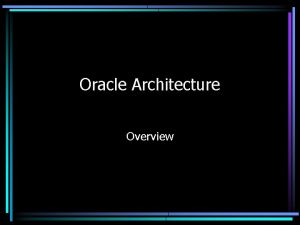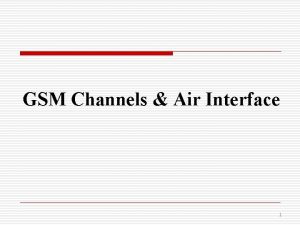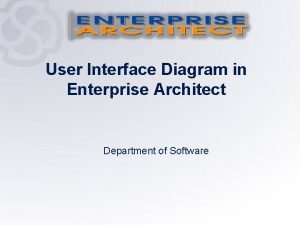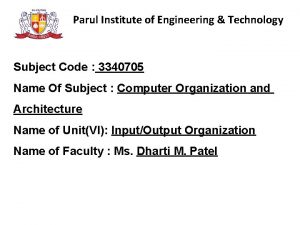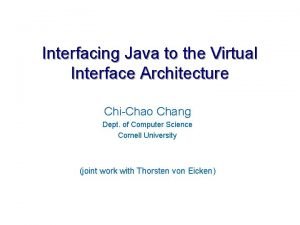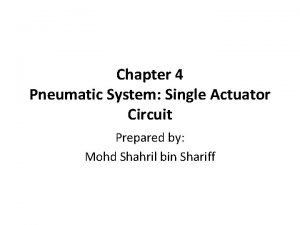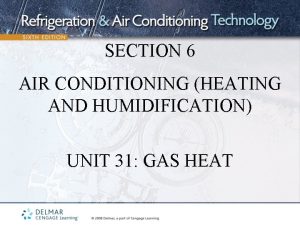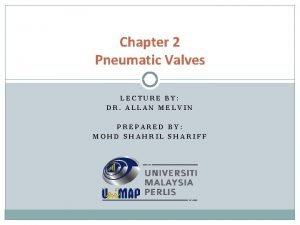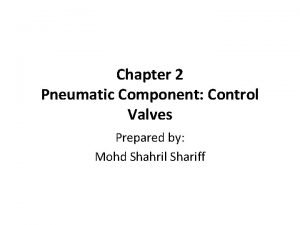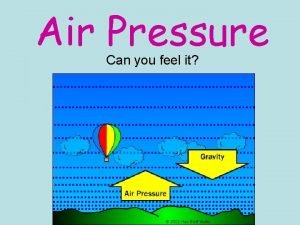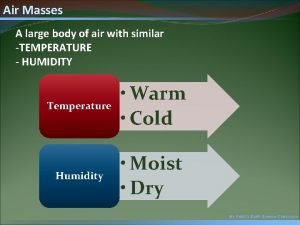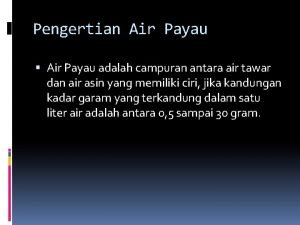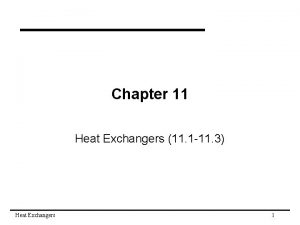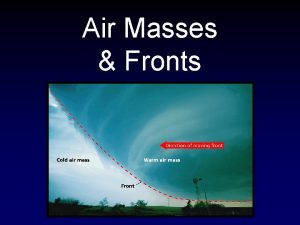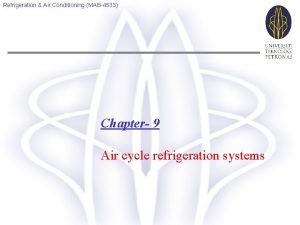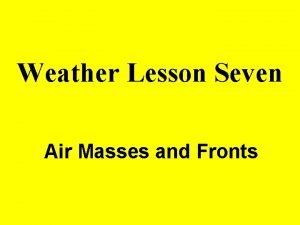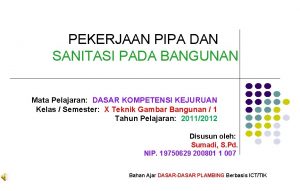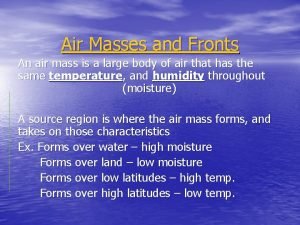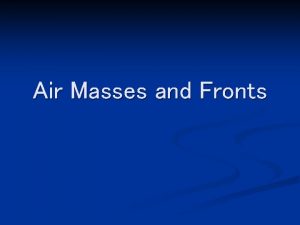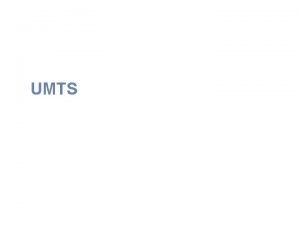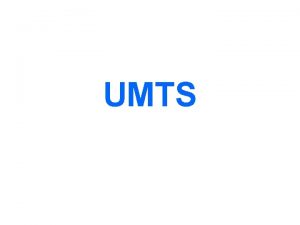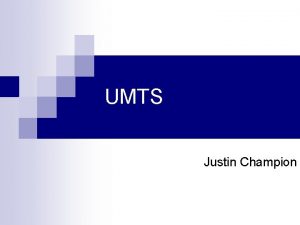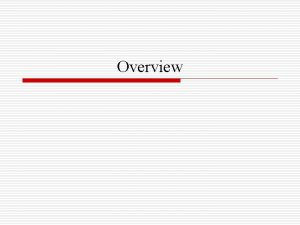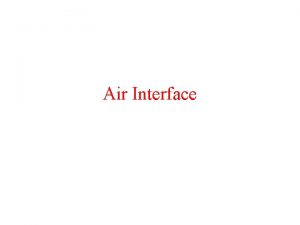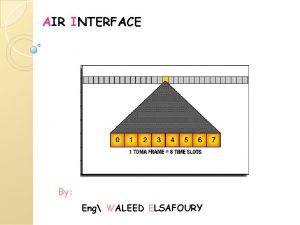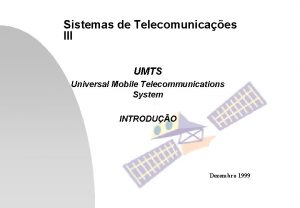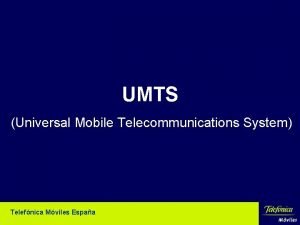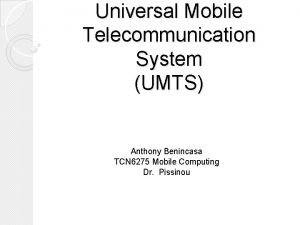Overview of UMTS Air Interface and Architecture Universal































































- Slides: 63

Overview of UMTS Air Interface and Architecture Universal Mobile Telecommunications Standard Tim-Robert Schönbeck Systeme der Mobilkommunikation 4. 1

Tim-Robert Schönbeck Systeme der Mobilkommunikation 4. 2

Tim-Robert Schönbeck Systeme der Mobilkommunikation 4. 3

Tim-Robert Schönbeck Systeme der Mobilkommunikation 4. 4

Tim-Robert Schönbeck Systeme der Mobilkommunikation 4. 5

Tim-Robert Schönbeck Systeme der Mobilkommunikation 4. 6

Tim-Robert Schönbeck Systeme der Mobilkommunikation 4. 7

Tim-Robert Schönbeck Systeme der Mobilkommunikation 4. 8

Tim-Robert Schönbeck Systeme der Mobilkommunikation 4. 9

UMTS Channels transport channels “services” offered by Layer 1 to higher Layers transportation of information (speech, data, control) functional description physical channels resource is code, frequency, and phase (only uplink) “signals in space” physical description how data is transported

Transport channels

dedicated transport channels Dedicated Channel (DCH) downlink or uplink q transmitted over entire cell or over only a part using lobe-forming antennas q carries user and control information q Note: There is only one dedicated transport channel, the Dedicated Channel (DCH)

Common transport channels Broadcast Control Channel (BCCH) q q q downlink always transmitted over the entire cell broadcast system and cell specific information fixed data rate of 32 kbit/s predefined channelization code which is the same for all cells Forward Access Channel (FACH) q q q downlink transmitted over entire cell or over only a part using lobe-forming antennas location cell of the mobile station is known control information to mobile station (location cell is known) may also carry short user packets

Common transport channels q Paging Channel (PCH) – – downlink always transmitted over the entire cell location cell of mobile station is unknown control information to mobile station q Random Access Channel (RACH) – – uplink always received from the entire cell control information from a mobile station may also carry short user packets

Physical channels dedicated physical channels Dedicated Physical Control Channel DPCCH (UL, DL) q Dedicated Physical Data Channel DPDCH(UL, DL) q common physical channels Physical Random Access Channel PRACH(UL) q Primary Common Control Physical Channel CCPCH (DL) q Secondary Common Control Physical Channel CCPCH (DL) q Synchronization Channel SCH (DL) q

Dedicated physical channels Dedicated Physical Data Channel (DPDCH) transports dedicated data (user or control) generated at Layer 2 and above, i. e. the dedicated transport channel DCH q zero, one or serveral DPDCH on a Layer 1 connection q Dedicated Physical Control Channel (DPCCH) contains Layer 1 control information consisting of pilot bits for channel estimation, bits for transmit power control (TPC) and for the transport format indicator (TFI) q the TFI informs the receiver about the instantaneous parameters of the different transport channels multiplexed on the DPDCH q

Structure of Uplink Dedicated Channels Data 1 Ndata bits DPDCH Pilot NTFCI bits DPCCH TFCI NTFCI bits FBI NFBI bits TPC NTPC bits Ts=2560 chips, 10*2 k bits, k=0. . 7 slot #0 slot #1 slot #i slot #14 Tf=10 ms frame #0 frame #1 frame #i frame #71 Tsuper=720 ms Tim-Robert Schönbeck Systeme der Mobilkommunikation 4. 17

Structure of Downlink Dedicated Channels DPCCH DPDCH DPCCH TFCI NTFCI bits Data 1 Ndata bits TPC NTPC bits Data 2 Ndata bits Pilot Npilotbits Ts=2560 chips, 10*2 kbits, k=0. . 7 slot #0 slot #1 slot #i slot #14 Tf=10 ms frame #0 frame #1 frame #i frame #71 Tsuper=720 ms Tim-Robert Schönbeck Systeme der Mobilkommunikation 4. 18

Control Information Pilot channel estimation TFCI information about the composition of the layer 1 connection FBI feedback information for transmit diversity (antenna diversity) TPC transmitter power control command Tim-Robert Schönbeck Systeme der Mobilkommunikation 4. 19

Multicode Downlink Transmission Power TFCI TPC Pilot DPCH 1 Data 2 DPCH 2 Data 1 Data 2 DPCHn Data 1 Data 2 Tim-Robert Schönbeck Systeme der Mobilkommunikation 4. 20

Multicode Uplink Transmission DPDCH 1 Data DPDCH 2 Data DPDCHn Data DPCCH Tim-Robert Schönbeck Pilot TFCI Systeme der Mobilkommunikation FBI TPC 4. 21

Tim-Robert Schönbeck Systeme der Mobilkommunikation 4. 22

Initial Cell Search Task: Search und acquisition of closest base station Aim: To be able to receive messages from this base station Solution: Frame and slot synchronization, identification of scramling code used in the base station

Initial Cell Search and Synchronization in 4 steps q. Slot Synchronisation q. Frame Synchronisation q. Code - Group Identification q. Srambling - Code Identification (by use of primary. CCPCH)

Tim-Robert Schönbeck Systeme der Mobilkommunikation 4. 25

Physical channels required for Synchronisation Tim-Robert Schönbeck Systeme der Mobilkommunikation 4. 26

P-SCH - Primary Sync Channel Tim-Robert Schönbeck Systeme der Mobilkommunikation 4. 27

Synchronization Channel SCH Primary SCH consists of an unmodulated Gold code cp of 256 chips q Primary SCH code is the same for every base station q Secondary SCH consists of repeatedly transmitting a length 15 sequence of unmodulated Orthogonal Gold codes of length 256 q each Secondary SCH code is chosen from a set of 16 different orthogonal Gold codes of length 256 q the code sequence (csi, 1, csi, 2, . . . , csi, 15) indicateds which of the 64 different code groups the base station scrambling code belongs q each of the 64 code groups contains 8 scrambling codes q

Selection of base station and time synchronisation Tim-Robert Schönbeck Systeme der Mobilkommunikation 4. 29

Matched filter Tim-Robert Schönbeck Systeme der Mobilkommunikation 4. 30

Reception of spreaded signals Tim-Robert Schönbeck Systeme der Mobilkommunikation 4. 31

Multipath Propagation Environment Channel Impulse response h(t, ) Tim-Robert Schönbeck Systeme der Mobilkommunikation 4. 32

Reception of spreaded, multipath signals Tim-Robert Schönbeck Systeme der Mobilkommunikation 4. 33

Reception of spreaded, multipath signals Tim-Robert Schönbeck Systeme der Mobilkommunikation 4. 34

RAKE Receiver for Multipath-Propagation Tim-Robert Schönbeck Systeme der Mobilkommunikation 4. 35

S-SCH Secondary Sync Channel Tim-Robert Schönbeck Systeme der Mobilkommunikation 4. 36

Grouping of Downlink Scrambling codes Tim-Robert Schönbeck Systeme der Mobilkommunikation 4. 37

Frame synchronisation and Scrambling Code Groups Tim-Robert Schönbeck Systeme der Mobilkommunikation 4. 38

Frame synchronisation and Scrambling Code Groups Sync step 2: Frame sync and identifying scrambling code group Tim-Robert Schönbeck Systeme der Mobilkommunikation 4. 39

CPICH - Common Pilot Channel Tim-Robert Schönbeck Systeme der Mobilkommunikation 4. 40

Primary Common Control Physical Channel (P-CCPCH) Tim-Robert Schönbeck Systeme der Mobilkommunikation 4. 41

Summary Cell search procedure Tim-Robert Schönbeck Systeme der Mobilkommunikation 4. 42

UMTS Scrambling codes qeach q 64 set consists of a primary scrambling code and 15 secondary scrambling codes code groups each with 8 primary scrambling codes Tim-Robert Schönbeck Systeme der Mobilkommunikation 4. 43

Tim-Robert Schönbeck Systeme der Mobilkommunikation 4. 44

Power Control --- Near-far-Problem received signal strength of all mobiles schould be the same !

Transmit Power Control Tim-Robert Schönbeck Systeme der Mobilkommunikation 4. 46

Transmit Power Control Tim-Robert Schönbeck Systeme der Mobilkommunikation 4. 47

Power Control • Every mobile is an interferer for every other mobile • Every base station is an interferer for every other base station • A single overpowered mobile/base station could block a whole • cell since every mobile/base station is an interferer for every • other mobile/base station • Power control is directly related to the capacity of the system • Uplink • The output power of all mobiles must be controlled in a way that all signals arrive at the base station with the same mean power level • Downlink • The output power of the base stations should be minimised to minimise the interference to other cells Tim-Robert Schönbeck Systeme der Mobilkommunikation 4. 48

Uplink Sendeleistungssteuerung Tim-Robert Schönbeck Systeme der Mobilkommunikation 4. 49

Uplink Sendeleistungssteuerung Tim-Robert Schönbeck Systeme der Mobilkommunikation 4. 50

Uplink Sendeleistungssteuerung Tim-Robert Schönbeck Systeme der Mobilkommunikation 4. 51

Downlink Sendeleistungssteuerung Tim-Robert Schönbeck Systeme der Mobilkommunikation 4. 52

Downlink Sendeleistungssteuerung Tim-Robert Schönbeck Systeme der Mobilkommunikation 4. 53

Types of transmit power control Tim-Robert Schönbeck Systeme der Mobilkommunikation 4. 54

Power Control q Outer loop (closed loop) - adjust SIR target for inner loop q Inner loop (closed loop) - SIR controlled - user oriented - for fast Power Control q Open loop for RACH

Power Control

Power Control - inner loop q adjust TX power of BS and MS to reduce near-far effect Example (DL): • MS estimates received power SRX of DPCCH after Rake combining • MS estimates downlink interference IDL • SIRest = SRX / IDL • generate transmit power control (TPC) command according to SIRest > SIRtarget, DL ----> TPC = down SIRest < SIRtarget, DL ----> TPC = up • BS increases power by DTPC d. Bs

Power control - TPC generation BS: all base stations in the active set send TPC commands based on a quality measurement BS: threshold for TPC is controlled in the outer loop by the network node MS: power up if TPC bits received of all BS indicate an upward step MS: power down if TPC bits received of at least one BS indicate downward step

Power control - open loop q Control RACH TX power q uses pathloss SIR target broadcast by BCCH Uplink interference level broadcast by BCCH transmit power of CCPCH – –

Power control - open loop From BCCH: - interference level (uplink) = IUL - SIRreq, UL - TX power of CCPCH = STX, DL MS measures RX power of CCPCH (SRX, DL) and calculated downlink path loss LDL = STX, DL / SRX, DL assumption: LDL = LUL (path loss identical in UL and DL directions) adjust TX power SRA, TX of RACH according to 1) SIRreq, UL = SRA, RX / IUL from 1) and 2) : 2) SRA, TX = LUL * SRA, RX SRA, TX = STX, DL / SRX, DL* SIRreq, UL * IUL

Tim-Robert Schönbeck Systeme der Mobilkommunikation 4. 61

Random Access Procedure Tim-Robert Schönbeck Systeme der Mobilkommunikation 4. 62

Random Access Transmission P 1 P 0 Pj 4096 chips 10 ms, 38400 chips Preamble Tim-Robert Schönbeck Message Systeme der Mobilkommunikation 4. 63
 Wcdma network architecture
Wcdma network architecture Arquitectura umts
Arquitectura umts Air higroskopis air kapiler dan air gravitasi
Air higroskopis air kapiler dan air gravitasi Universal interface
Universal interface Precise strike pathfinder
Precise strike pathfinder Confirmtx
Confirmtx Universal interface
Universal interface Radovanovi
Radovanovi Universal interface
Universal interface Interface in interface java
Interface in interface java Office interface vs industrial interface
Office interface vs industrial interface Industrial interfaces
Industrial interfaces Interface------------ an interface *
Interface------------ an interface * What is user support in hci
What is user support in hci Onap architecture
Onap architecture What is stylistic overview
What is stylistic overview Mobile switching center architecture
Mobile switching center architecture Overview of grid architecture
Overview of grid architecture Overview of oracle architecture
Overview of oracle architecture Gsm air interface in mobile computing
Gsm air interface in mobile computing Component diagram enterprise architect
Component diagram enterprise architect I/o interface in computer architecture
I/o interface in computer architecture I/o interface in computer architecture
I/o interface in computer architecture Jbufs
Jbufs Memory valve in pneumatic
Memory valve in pneumatic Is methane lighter than air
Is methane lighter than air Flow control valve direction
Flow control valve direction Two pressure valve symbol
Two pressure valve symbol Barometer
Barometer Call and return architecture
Call and return architecture Air hujan sanggup menjadi air tanah lantaran proses … *
Air hujan sanggup menjadi air tanah lantaran proses … * Air pelarut
Air pelarut Chapter 12 air section 1
Chapter 12 air section 1 Can you feel it in the air in the air
Can you feel it in the air in the air An air mass is a large body of air with
An air mass is a large body of air with Two cold air masses converge on a warm air mass
Two cold air masses converge on a warm air mass You put your left hand in
You put your left hand in All kinds of shapes
All kinds of shapes Right hand in the air left hand in the air
Right hand in the air left hand in the air Air payau adalah campuran dari
Air payau adalah campuran dari Plate type exchanger
Plate type exchanger Cold front air movement
Cold front air movement Air masses & frontswhat is an air mass?
Air masses & frontswhat is an air mass? Aircraft refrigeration system
Aircraft refrigeration system Air masses & frontswhat is an air mass?
Air masses & frontswhat is an air mass? Peralatan sanitasi bangunan
Peralatan sanitasi bangunan A swirling center of low air pressure is called
A swirling center of low air pressure is called Chapter 12 air section 1 what causes air pollution
Chapter 12 air section 1 what causes air pollution Cold air mass overtakes warm air mass
Cold air mass overtakes warm air mass Air masses & frontswhat is an air mass?
Air masses & frontswhat is an air mass? Air masses & frontswhat is an air mass?
Air masses & frontswhat is an air mass? Stationary front
Stationary front What is architecture business cycle?
What is architecture business cycle? Product architecture design
Product architecture design Product architecture example
Product architecture example Bus architecture in computer organization
Bus architecture in computer organization Overview of transcription and translation
Overview of transcription and translation Data quality and data cleaning an overview
Data quality and data cleaning an overview Group of carbon
Group of carbon Chicago time
Chicago time What is bioinformatics an introduction and overview
What is bioinformatics an introduction and overview An overview of data warehousing and olap technology
An overview of data warehousing and olap technology Data quality and data cleaning an overview
Data quality and data cleaning an overview Data quality and data cleaning an overview
Data quality and data cleaning an overview
